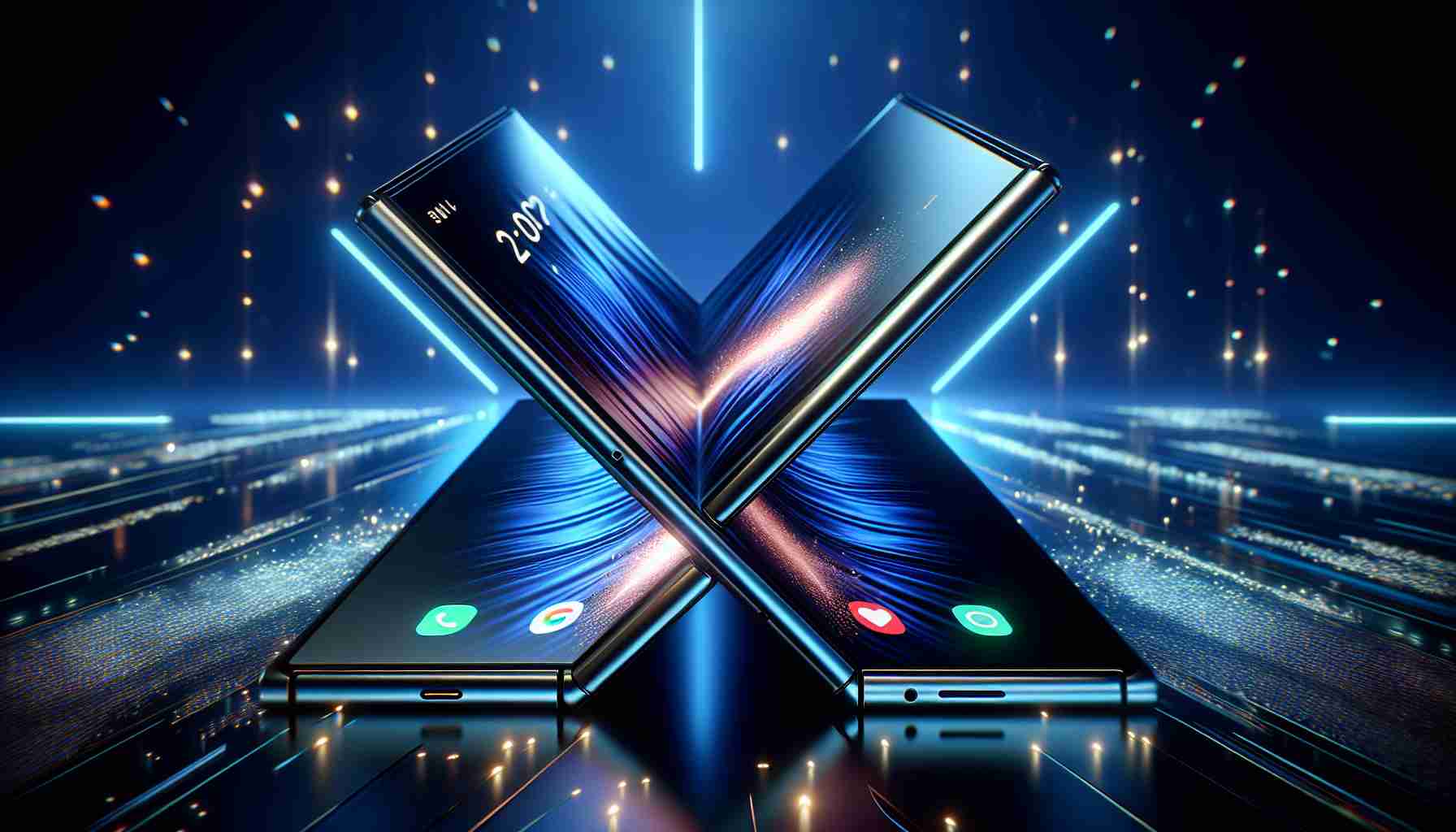The foldable smartphone market is experiencing a dynamic transformation, as technological advances and creative designs are pushing the boundaries of traditional smartphone concepts. With more options than ever before, consumers are looking at a future where their next mobile device could easily fold into their pockets.
Xiaomi, a leading figure in the foldable phone race, is gearing up to diversify its lineup with the introduction of the Xiaomi Mix Flip – a clamshell foldable phone. This anticipated addition will complement their existing book-style Mix Fold series, providing a fresh twist to their catalog.
A glimpse at the Xiaomi Mix Flip has set the tech community abuzz, showcasing a bold and distinctive look that breaks from the mold. Revealed through a leak on the social media platform Weibo, the device flaunts a dual-tone design, with the lower back panel sporting a subtle beige or champagne color accentuated by Xiaomi’s emblem. A striking metallic hinge connects the two halves, revealing Xiaomi’s attention to detail and build quality.
The upper half of the back stands out with a prominent rectangular secondary display, complete with rounded corners occupying the majority of the space. While some may question the choice to separate the screen from the camera module, the decision appears to be a deliberate one to give the Mix Flip an unmistakable identity in the crowded foldable landscape.
Xiaomi isn’t stopping there, with rumors suggesting that the upcoming Xiaomi Mix Fold 4 could claim the title of the thinnest foldable phone yet. As user preference leans towards sleek devices that blend performance with portability, Xiaomi’s focus on reducing thickness without compromising on functionality could position them at the forefront of the foldable evolution.
As the industry embraces innovation, Xiaomi’s latest designs are expected to contribute significantly to the diversification and appeal of foldable smartphones within the global market.
Important Questions:
1. What are the key features of Xiaomi’s new foldable phones?
2. How does Xiaomi’s approach to foldable phone design compare to competitors?
3. What potential challenges do foldable phones face in gaining wider consumer acceptance?
4. What are the advantages and disadvantages of foldable phones?
Answers:
1. Xiaomi’s new foldable phones, such as the Xiaomi Mix Flip, reportedly feature a dual-tone design, a distinctive metallic hinge, and a secondary display on the back. The Xiaomi Mix Fold 4 is rumored to be one of the thinnest foldable phones, highlighting Xiaomi’s attempt to balance thinness with functionality.
2. Xiaomi’s design approach with the Mix Flip offers a fresh look that separates the secondary display from the camera module, giving it a unique identity in the market. This could help Xiaomi stand out in a field with competitors like Samsung and Huawei, who have their own foldable devices with different design philosophies.
3. Challenges for foldable phones include durability concerns, high production costs leading to increased consumer pricing, and convincing consumers to switch from conventional smartphones to an evolving technology that might initially have some limitations or perceived gimmicks.
4. Advantages of foldable phones include greater screen real estate in a compact form, innovative multitasking capabilities, and a fresh user experience. Disadvantages can encompass higher costs, potentially bulkier devices compared to standard smartphones, and early-stage issues such as screen crease visibility or hinge mechanisms failing.
Key Challenges and Controversies:
One of the main challenges is durability. Foldable phones have moving parts such as hinges, which can wear out with frequent use. Additionally, the foldable screen must endure bending, raising concerns about its long-term reliability.
Another challenge is the price point. Foldable phones are typically more expensive to produce, leading to higher retail prices that can put them out of reach for the average consumer. This high cost may slow down the adoption rate.
There’s also the usability factor. Consumers might find it hard to adjust to a new way of interacting with their device, and the software optimisation for foldable interfaces is still in progress, with app developers needing to adapt to the new format.
Advantages:
– Portability: Despite having larger screens, foldable phones can be as pocketable as traditional smartphones.
– Innovation: They push the boundaries of design, potentially leading to new and improved ways of interacting with mobile devices.
– Productivity: Larger screens and multitasking capabilities can boost productivity for certain tasks.
Disadvantages:
– Price: High production costs lead to premium pricing that can deter budget-conscious consumers.
– Weight and Thickness: Current foldable phones can be heavier and thicker than regular smartphones, making them less comfortable to carry and use for extended periods.
– Durability Concerns: The folding mechanism and screen are subject to wear and can present issues over time.
Related Links:
For more information on the latest developments in the mobile phone industry, you can visit the following pages:
– Xiaomi’s Official Website: mi.com
– Samsung’s Official Website for Foldable Phones: samsung.com
– Huawei’s Official Website: huawei.com
Please note that these URLs were verified as of the last update, but be mindful that web addresses can change.
